The data is not edited other than being grouped in points of 50 observations averaged. This process will result in a smooth curve.
The first curve is of the entire data set. If anything - it shows that the star is relatively constant over time. The magnitude scale for all charts is the same - the chart spans only 0.07 magnitude.
The data is presented on the same scale for each night in the rest of the curves. The window of time for each of the curves is 0.35 day (7.2 hours).
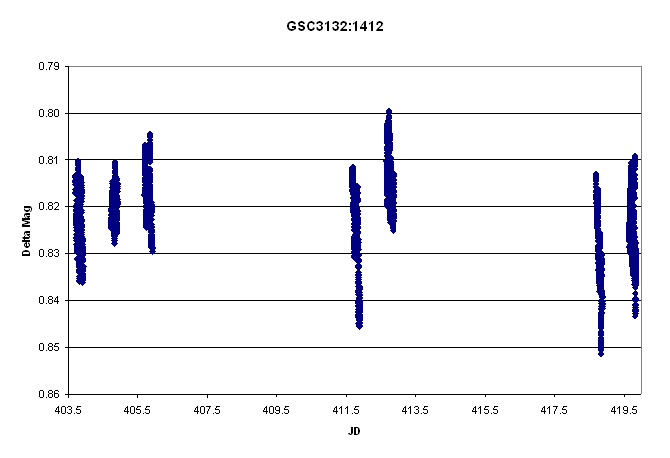
Jerry Hudson of the UC Berkeley Astronomy Department has analyzed the data and seen no consistent periodicity of variation over the time scale here, although one night (JD 403) did show a strong peak at 13 cycles per day. It was not evident in other nights.
The reader is cautioned that this data represents nothing claimed as a stellar variation, however further data will be obtained!
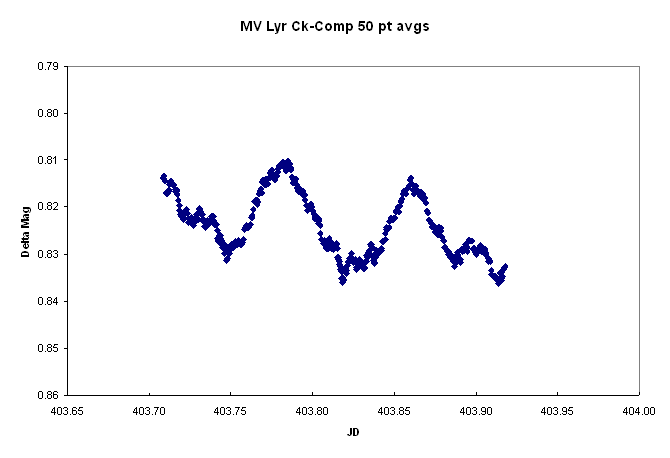
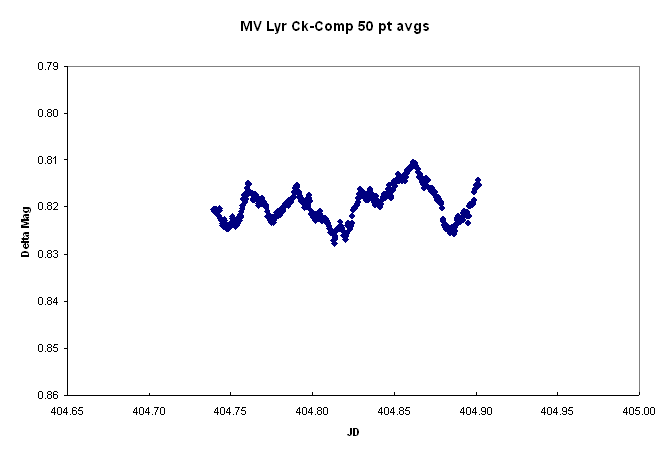
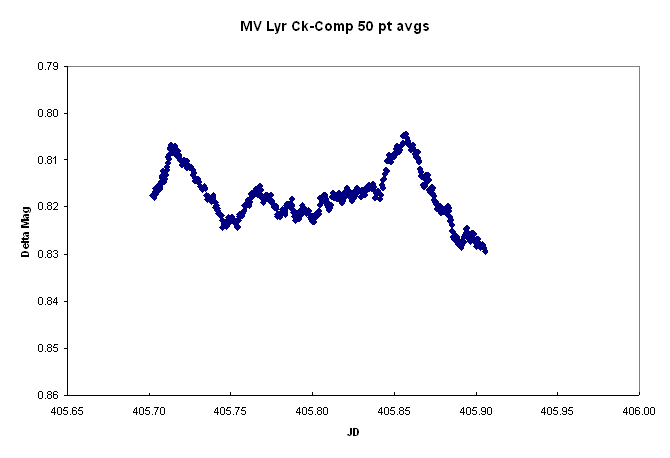
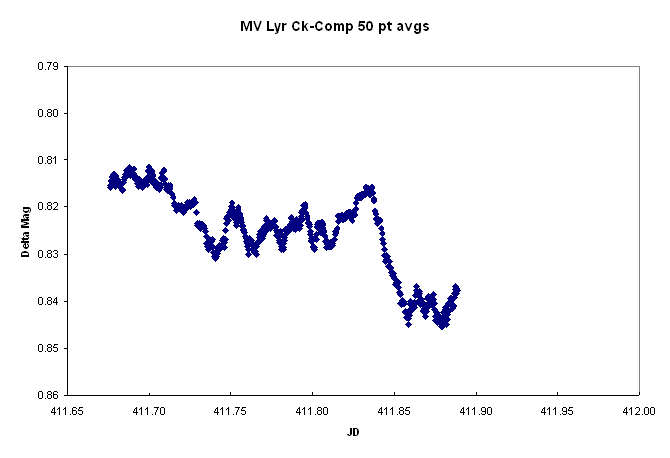
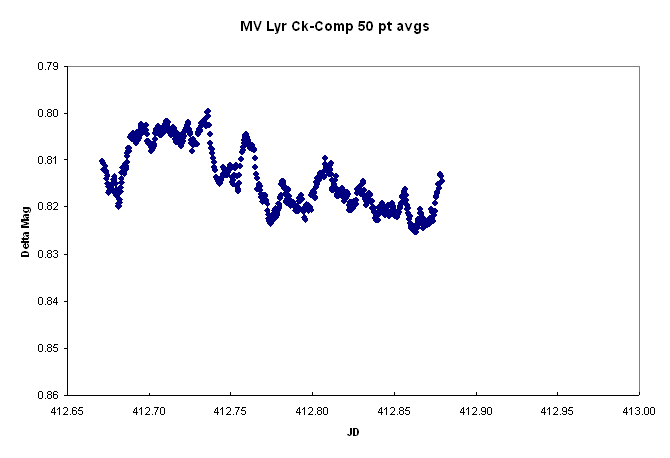
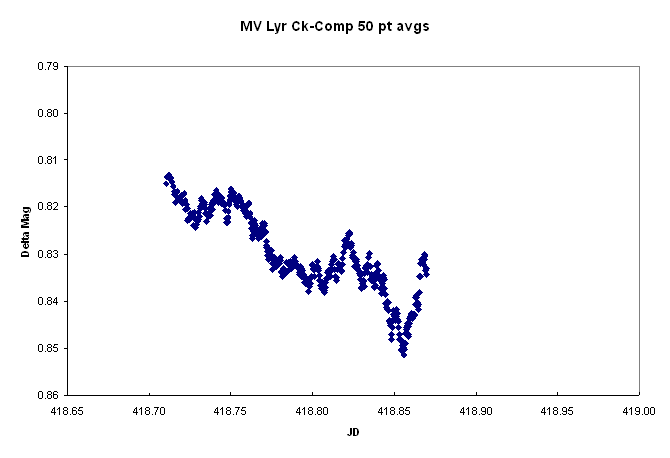

There is a suggestion that there may be longer term variation shown in the daily averages - but the data may not be good enough to see what appears to be a slow decline in brightness: Don't believe all you see!! 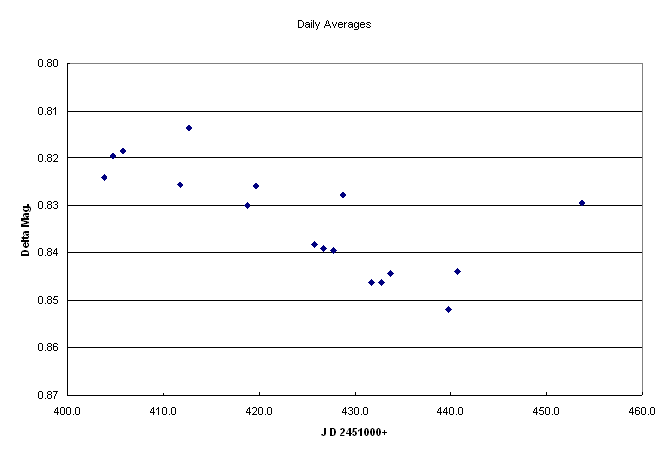
Averaged daily measurements for the Check Star: GSC3132:1412. And there remains the further question, could the comparison star be varying (too?). It has not been suspected of being variable, while the check star has been so noted on the AAVSO chart.
More data will be posted as it is available!